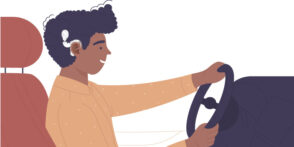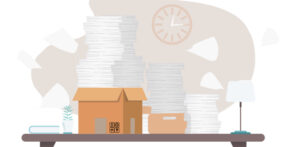The Road Ahead
Two experts provide perspectives on AAMVA’s 90th anniversary and where the safety community is headed as we move toward our 100th anniversary
NETWORK EXPANSION
Colin Mooney, Executive Director, Commercial Vehicle Safety Alliance
Since it was founded, AAMVA has been known for its reliability and stability. They were truly the first public sector association, and so many organizations evolved from AAMVA, including the CVSA and the IRP. We kind of look at AAMVA as the elder in the public sector space.
Going forward, however, I wonder how AAMVA will assist governments to better leverage technology. For instance, once we get into autonomous vehicles, what sort of credentialing will be required? Will there be additional endorsements that need to be considered on a driver’s license? We’re looking at universal electronic ID now, which in theory, could replace a license plate on a vehicle by broadcasting a short-range message to law enforcement with the vehicle’s VIN and the registered owner. And with our new Level 8 inspection, we want to be able to wirelessly inspect a commercial vehicle as it travels down the road without having to stop at any weigh stations. What that means for AAMVA is when we pick up the universal electronic ID of a vehicle, we need to be able to query that VIN through all of the authoritative sources AAMVA uses in real time. Our goal is to get from 4 million roadside inspections a year to 400 million, which means that the communication between the states and AAMVA is going to increase significantly.
We are at a pivotal point in leveraging technology. With the growth of mobile driver’s licenses and universal electronic identification, AAMVA will need to continue to ramp up their digital exploits and remain at the forefront of these new technologies.
Also, I’m hoping that AAMVA will continue to increase their networking capacity in order to accommodate our needs in the law enforcement community.
INDUSTRY RELIANCE
Betty Serian, Owner/CEO, Betty Serian and Associates
In the next 10 years, there will be another digital explosion. In this next decade and beyond, AAMVA is going to have to rethink and retool how they approach serving their members and how they can take a more aggressive role in helping members and the states succeed. Specifically, they’ll need to ensure interoperability between states. I don’t believe there’s going to be the opportunities to bring in committees and working groups, if there is, they’re going to have to be done much faster and be much more agile.
I also believe that AAMVA needs to move toward the reduction and eventual elimination of paper. Not only is it better for the planet, it will help to drive the reduction in fraud. The more digital-focused the community becomes, eliminating paper will be critical to future success.
The other thing I think that AAMVA needs to do going forward is to have a greater reliance on industry experience. Industry is already working on a digital transformation and knows more than the states and has a different perspective. And because of what is called the “Silver Exodus,” many people with 30-plus years of experience are going to be retiring soon, and jurisdictions will have a hard time replacing that kind of institutional knowledge, so once again, AAMVA will need to rely more on industry experts.
That said, AAMVA has been and will continue to be an incredible organization. It’s given so much to many people over the last 90 years. The impact they’ve had on the community, the people, administrators and industry has been tremendous. I will always be humbled by the opportunities I’ve had to serve at AAMVA.




